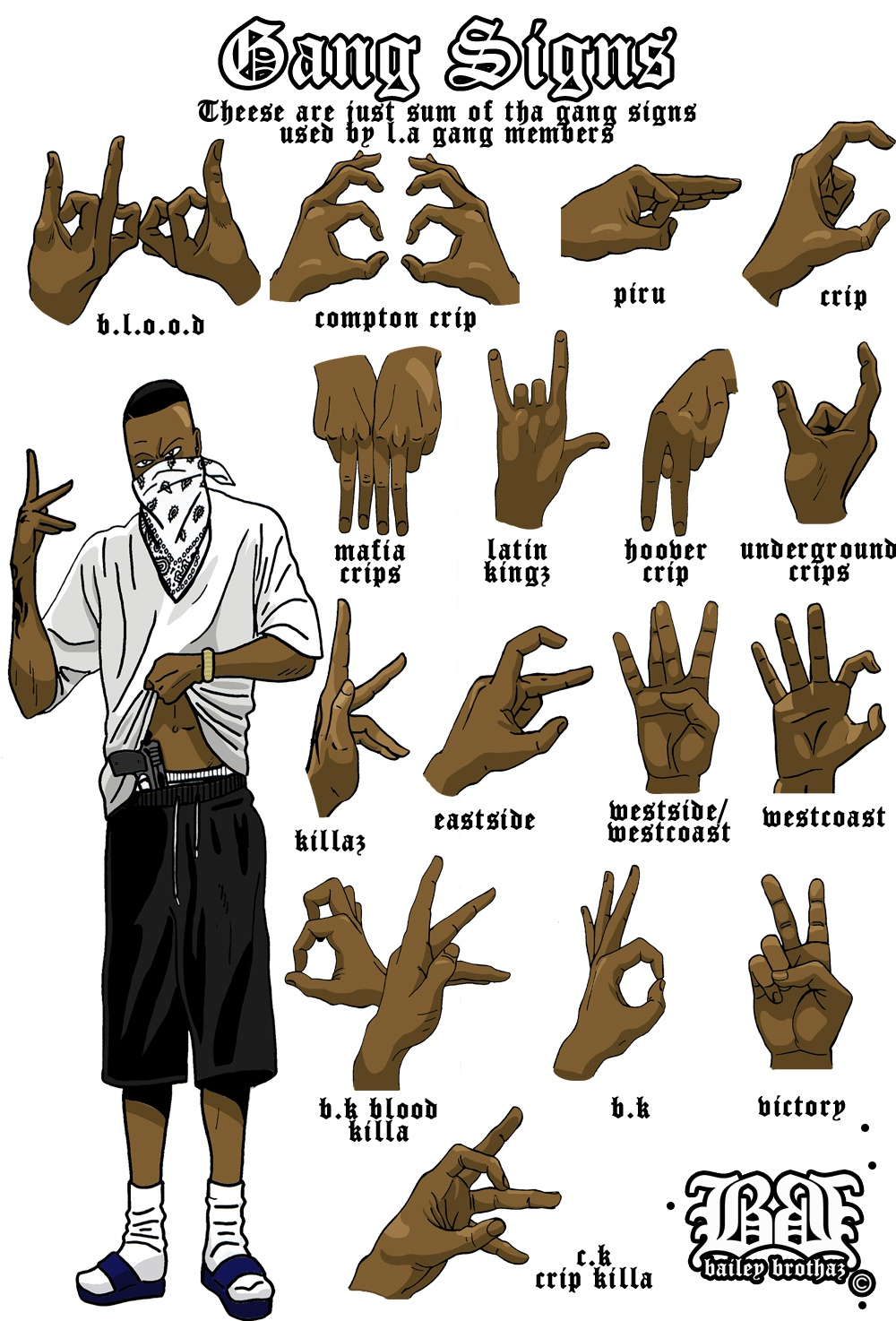Understanding Bloods Gang Tattoos and Their Significance
The crimson ink, meticulously etched onto skin, tells a story. It speaks of allegiance, of shared experiences, and of a life intertwined with the Bloods gang. These tattoos, often cryptic and deeply symbolic, serve as a visual language within the gang, communicating rank, affiliation, and personal narratives.
Understanding the meaning behind Bloods gang tattoos is crucial for law enforcement, social workers, and community members alike. It provides insights into the gang's structure, history, and the individual experiences of its members. Beyond mere identification, these markings can reveal a complex tapestry of loyalty, rivalry, and the challenges faced by those caught within the gang's influence.
This article aims to delve into the intricate world of Bloods gang tattoo symbolism. We will explore the historical context of these markings, their evolution over time, and the various interpretations they carry. It's important to note that while some symbols may have universal meaning within the gang, others can be highly personalized and specific to an individual's experiences.
The study of gang tattoos is a sensitive subject. It's vital to approach this topic with respect and a commitment to understanding the complex social factors that contribute to gang involvement. Sensationalizing or glorifying these markings is not the intention. Rather, this exploration seeks to provide an informative and nuanced perspective on a significant aspect of gang culture.
It is important to preface this exploration by acknowledging the negative consequences associated with gang affiliation. While tattoos may serve as a source of identity and belonging for some, gang involvement often leads to violence, criminal activity, and a diminished quality of life. This analysis should not be interpreted as an endorsement of gang culture, but rather as an attempt to understand its complexities.
The origins of Bloods gang tattoos can be traced back to the early 1970s in Los Angeles. Initially formed as a protective alliance against the Crips, the Bloods quickly developed their own distinct identity, marked by the color red and a complex system of symbols and rituals. Tattoos played a significant role in solidifying this identity and expressing loyalty to the gang.
Common Bloods gang tattoo designs incorporate the number "5," representing their affiliation with the People Nation, a larger alliance of gangs. The letters "MOB," signifying "Member of Bloods," are also frequently observed. Other common motifs include the dog paw, signifying loyalty and protection, and various imagery related to warfare and aggression.
Interpreting Bloods gang tattoos requires careful consideration of context and individual variations. While certain symbols may have generally accepted meanings, personal narratives and experiences can influence the specific design and placement of tattoos. It's essential for law enforcement and community workers to approach interpretation with caution and seek expert guidance when necessary.
It is crucial to recognize that while some individuals may perceive their Bloods gang tattoos as symbols of belonging and protection, these markings can have significant negative consequences. They can hinder employment opportunities, perpetuate stereotypes, and contribute to social stigma. Furthermore, they can serve as a constant reminder of past involvement in criminal activity, making it difficult for individuals to disengage from the gang lifestyle.
Advantages and Disadvantages of Bloods Gang Tattoos
| Advantages (from the perspective of a gang member) | Disadvantages |
|---|---|
| Sense of belonging and identity within the gang | Social stigma and discrimination |
| Visual representation of loyalty and commitment | Limited employment opportunities |
| Intimidation of rivals | Increased risk of violence and police scrutiny |
Frequently Asked Questions about Bloods Gang Tattoos:
1. What does the number "5" represent in Bloods gang tattoos? It signifies their affiliation with the People Nation.
2. What does "MOB" stand for? It stands for "Member of Bloods."
3. Are all Bloods gang tattoos the same? No, individual variations and personal narratives influence designs.
4. Can Bloods gang tattoos be removed? Yes, but removal can be expensive and time-consuming.
5. Do Bloods gang tattoos always indicate current gang involvement? Not necessarily, some individuals may have left the gang but still bear the markings.
6. Why is it important to understand Bloods gang tattoo symbolism? It helps law enforcement and community workers understand gang dynamics and individual experiences.
7. Can having Bloods gang tattoos lead to legal consequences? While the tattoos themselves may not be illegal, they can be used as evidence in criminal investigations.
8. What resources are available for individuals seeking to leave the Bloods gang? Various community organizations and government programs offer support and resources for gang intervention and exit strategies.
Tips and Tricks related to understanding Bloods gang tattoos: Consult with gang specialists, consider context, and avoid making assumptions based solely on tattoos.
In conclusion, Bloods gang tattoos are a complex and nuanced subject. They serve as a visual language within the gang, communicating affiliation, rank, and personal narratives. While these markings can provide a sense of belonging for some, they also carry significant negative consequences, including social stigma, limited opportunities, and increased risk of violence. Understanding the meaning and implications of Bloods gang tattoos is crucial for law enforcement, social workers, and community members working to address the challenges associated with gang involvement. It is vital to approach this topic with sensitivity and a commitment to fostering understanding and positive change. Further research and community engagement are essential to developing effective strategies for gang intervention, prevention, and supporting individuals seeking to leave the gang lifestyle behind. By acknowledging the complexities of gang culture and the individual experiences of its members, we can work towards creating safer and more supportive communities for everyone.
Navigating medicare humanas ppo plan 80840
The rise of ski mask dope art rebellion anonymity and artistic expression
Decoding cheyennes social scene navigating beyond the usual














